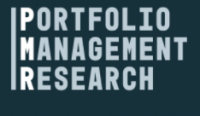Factor Investing and Monkey Business
Recent Insights Into Factor Investing
A portfolio constructed to contain a specific factor exposure may stand a reasonable chance at beating a market cap-weighted portfolio, but why would a portfolio with inverted factor weights have a similar chance of success? FTSE Russell examines this curious dynamic and also discusses the process of constructing portfolios with optimal factor exposures. Nuveen, meanwhile, explores a fascinating theme - the use of factor exposures to explain the returns from a variety of "real asset" classes.
The rest of our list varies in theme, including an examination of Value vs Growth, the Size factor (or Size plus a few caveats), factor timing, the capacity for factor strategies and the use of factors in liability-driven portfolios.

Inverting Factor Strategies: No more ‘monkey business’ (FTSE Russell, 2020)
Much ado has been made about a recent paper involving factor inversion and its ability to also beat a market-cap weighted index. The authors explore why this is the case, but stress that factor exposures are simply a result of the particular portfolio construction and weighting scheme.
Pension Plan Optimization using Public and Private Real Assets (Nuveen, 2020)
Nuveen introduces a factor-based (and a hybrid) approach to building real asset portfolios, explaining how to identify factor premiums for this asset class and how to capture them via the portfolio construction process, using a pension plan case study to demonstrate.
Value Stocks: Trapped or spring-loaded? (Northern Trust AM, Sep 2020)
The rich history of Value's outperformance versus Growth goes back almost a century, but lately it has been a different story. Have markets evolved to now overweight intangible assets (and Growth stocks as a result), or is there a chance of a near-term comeback for Value?
Redefining 'Value' for a Modern Economy (Wellington Management, Sep 2020)
Wellington Management brings to light some of Value's structural headwinds, looking at valuation multiples and whether they've adapted alongside modern corporate balance sheets. They then propose a new framework that takes some of these issues into account.
Podcast: The pressure on value investors is almost unbearable (Robeco, Sep 2020)
The underperformance of Value vs Growth has been incredible in 2020, and value investors are feeling pressure to re-evaluate their entire process. But could we be on the precipice of a giant rotation back into Value?
The Benefits of Style-Agnostic Investing (Aviva Investors, 2020)
For compliance reasons, this paper is only accessible in certain geographies
This Aviva Investors article argues that stock markets are inefficient in multiple ways. Following on from this, why should investors focus on just one of these ways instead of paying attention to multiple inefficiencies concurrently?
Factor Investing in LDI and Goal-Based Solutions (EDHEC-Risk Institute, 2020)
Liability-driven investments have been slow to adopt factor investing techniques, but this paper seeks to find the middle ground between the type of factor analysis traditionally utilised in return-seeking portfolios and a risk-centric liability-hedging framework.
Assessing the Capacity of Factor Strategies to Grow (Qontigo, Sep 2020)
Does the market for equity smart beta strategies have room to grow? Qontigo looks at smart beta ETFs to evaluate capacity issues and whether rebalancing costs are problematic.
Factor Investing Debates: Should you time your factor exposures? (Robeco, 2020)
If some factors are cyclical, then factor timing ought to be possible, yet implementing factor timing strategies can get quite complex. Robeco explores the intricacies of factor timing in this brief thought piece.
Evaluating the Financial Materiality of Gender Diversity Factors (Calvert, 2019)
For compliance reasons, this paper is only accessible in the United States
What constitutes gender diversity? Here, Calvert tests several gender diversity factors, including the number of women in leadership positions, the amount of female board members, and the percentage of female board members.
The Seasons of the True Size Anomaly (EDHEC-Risk Institute, 2020)
The authors choose to combine the size anomaly with seasonal effects and they build a trading strategy around their hypothesis. This combination produces some striking returns when back-tested.
Settling the Size Matter (Robeco, 2020)
This paper seeks to analyze the whether the size premium is robust when controlling for quality as well. The anomaly seems to produce alpha in U.S. markets, but may struggle to replicate these effects on an international basis.





